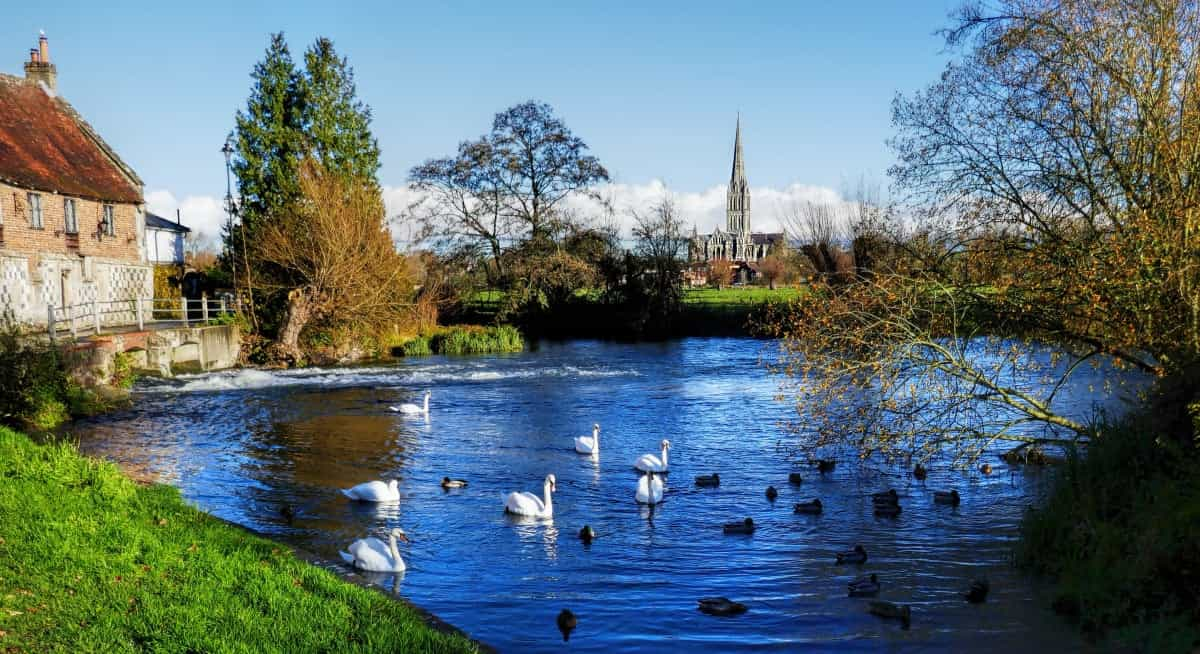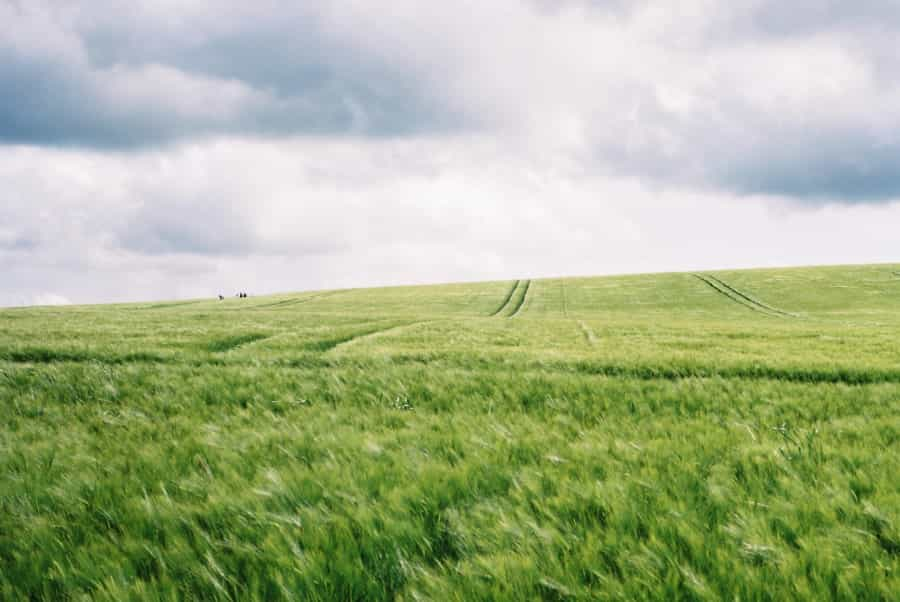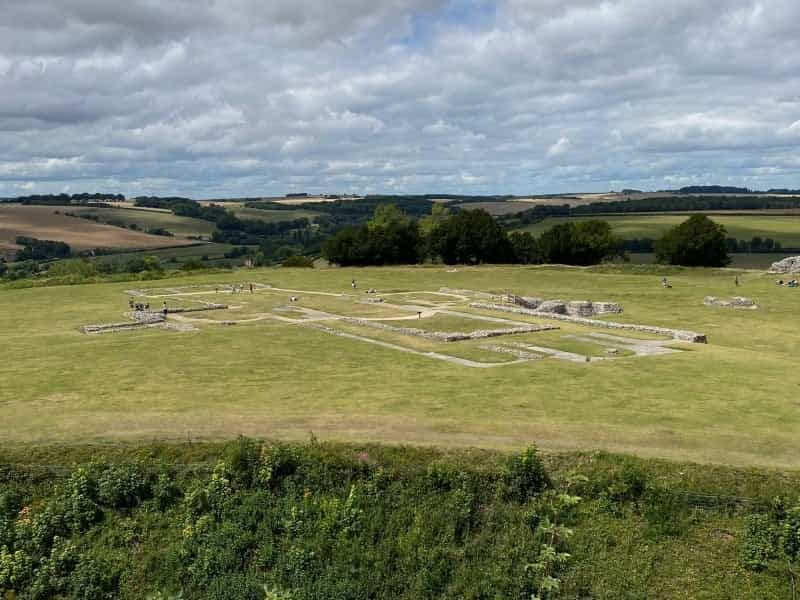6 Historical Sites You Need to Visit in Wiltshire

Wiltshire is an awe-inspiring treasure trove of prehistoric monuments and archaeological sites. This county is a playground for those interested in a bygone era… but even if you don’t know what a Neolithic long barrow is, you will by the time you return home.
We’ve created a list of the most incredible prehistoric sites in Wiltshire, so get ready to go on a journey through England’s past.
Stonehenge
Stonehenge is one of the best-known prehistoric sites in Europe – and, quite possibly, the world. It stands on Salisbury Plain and is made up of an outer ring of large stones known as sarsens. Each is around 13ft high and 7ft wide, and weighs an incredible 25 tons.
Considering there was no advanced technology in those days, it’s hard to imagine exactly how these large and heavy stones were even transported here – let alone assembled. Plus, no one is even sure why they were brought to Stonehenge or what it was actually used for. The place is shrouded in mystery – and that only adds to its magic.
The circular ditch is the earliest known part of the site and is thought to have been built around 3000BC as an early form of henge monument. The stone circle was later assembled during the New Stone Age (roughly between 2850 BC and 2200 BC). Experts believe that as many as 150 individuals were originally buried here, making it the largest late New Stone Age cemetery in the British Isles.
Huge areas of the Stonehenge landscape are now owned by the National Trust, while English Heritage welcomes plans for building a tunnel allowing the ancient monument to reconnect with its surrounding landscape. Together, Stonehenge and Avebury form the heart of a UNESCO World Heritage site, so read on to learn more about the latter.
Find a place to set up camp near Stonehenge.
 Avebury
Avebury
The endearing village of Avebury is home to the largest prehistoric stone circle in the world. With a diameter of 1,088 feet, this architectural attraction dates back to the New Stone Age and was originally formed of 100 stones in total.
Naturally, over thousands of years these stones have encountered serious erosion and weathering, but this doesn’t detract from their awe inspiring presence. Similarly to Stonehenge, no one is certain about the purpose of the stone circle, but it's generally believed to have been used for rituals or ceremonies.
Owned and managed by the National Trust, the site also includes Avebury Manor, a Grade-I-listed manor house. The 16th-century building is open to the public and visitors are encouraged to make themselves comfy on the antique furniture and play snooker in the Billiard room.
While you’re in the area, head to the nearby West Kennet long barrow – one of the most spectacular Neolithic chambered tombs in Britain. It was built way back in around 3650BC and used as a grave for at least 1000 years. Enter the chamber of the barrow and climb to the top of the mound to look out onto Silbury Hill and Windmill Hill.
Take a look at campsites near Avebury.
 Woodhenge
Woodhenge
Built around the same time as Stonehenge, Woodhenge is a timber monument made up of six oval standing posts surrounded by a bank and ditch. It’s the lesser-known relative of Stonehenge, and while it may not be as interesting to look at, it’s definitely worth a trip. If you’re really committed, get there as dawn breaks on June 21st, as the site was originally assembled to align with the summer solstice sunrise.
So how was it discovered? Well, back in 1925, Squadron Leader Gilbert Insall was flying near the Wiltshire village of Durrington when he photographed the field below him and noticed several dark spots and rings on the developed picture. Of course he didn’t realise at the time, but since excavating the site we now know that these shapes were actually the post holes and surrounding bank and ditch of Woodhenge.
After you’ve explored the area, you’re bound to be hungry. Around a 10-minute drive away from Woodhenge is the Red Lion, an award-winning country pub serving up fab local food and ales.
Find somewhere to lay your head near Woodhenge.
 Old Sarum
Old Sarum
On the site of the earliest settlement of Salisbury sits the Iron Age hillfort of Old Sarum, one of the most historically important places in the South of England. The views surrounding it are outstanding, so it’s no surprise that it’s been almost consistently settled for over 5000 years. The Romans, Saxons and Normans all used the site for their own purposes before it grew into one of the most thriving settlements in medieval England.
After the conquest of 1066, William the Conqueror built a motte and bailey castle on the hillfort. Later, in 1092, Salisbury’s first cathedral was consecrated at Old Sarum and became a sanctuary for the Magna Carta. Fast forward to the 13th century, and a new cathedral was built around two miles south of the site: the present-day Salisbury Cathedral.
Observe and explore the earthworks of the hillfort, the remains of the castle and the ruins of the old cathedral, on your visit to Old Sarum. And if you’re a fan of flowers, it’s worth detouring to see the bluebells near Salisbury.
Escape from it all near Old Sarum.
Silbury Hill
The mysterious Silbury Hill is the biggest artificial prehistoric mound in Europe. Its height and volume compare roughly to the Egyptians’ pyramids but no one is sure why it exists.
What we do know is that the mound was formed during a time of great change in Britain. New forms of pottery, burial rites and metal-working were advancements that resulted in intense building activity in Avebury and the surrounding area. Understandably, the intrigue around Silbury Hill has inspired many myths and legends as people try to unearth the purpose of this enigma.
While you can’t climb the hill, there’s a mile-long circular footpath around the mound that has fantastic views. It’ll give you the chance to ponder on your own theories…
Check out campsites near Silbury Hill.
Wilton House
If you need a bit of a break from ancient monuments and prehistoric sites (it happens to the best of us) then head to Wilton House, around a 15-minute drive from Stonehenge.
There’s still plenty of history around these parts, as the town was once an ancient settlement as well as the royal seat in the ancient Saxon Kingdom of Wessex. It’s been home to the Earls of Pembroke since the 1540s and has over 22 acres of parkland and gardens to stroll around. The upper cloisters of this Grade-I-listed building contain one of the most celebrated collections of antique Greek and Roman statuary in Europe.
Go glamping near Wilton House.
Up for seeing more of this county’s world-class attractions? Check out our eight top places to visit in Wiltshire. We’ve also put together a guide to all its World Heritage Sites.